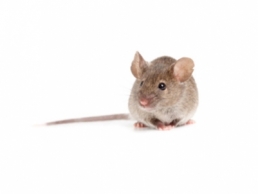The Difference Between Mice and Rats
Norway rats, roof rats, and house mice are the most common types of home-invading rodents. There are a number of physical differences between mice and rats that help to identify them:
- House Mice – These little rodents are lightweight and measure about five inches in length. They have grayish-brown fur.
- Norway Rats – These heavy, bulky rodents are about a foot long on average. The pests have gray coats with pale underbellies.
- Roof Rats – This species is agile and slender, though roof rats are about the same length as Norway rats. These rodents are grayish-brown in color with a light yellow underside.
Mouse vs. Rat Behavior
Families of mice consist of one dominant male, several females, and their young. Rats live in similar colony structures. However, rats and mice have different nesting preferences.
Several behaviors may indicate whether there is a mouse vs. a rat problem. Norway rats, for example, stay around the lower levels of homes, while roof rats prefer higher elevations like attics. Mice, on the other hand, simply build their nests close to food sources. Many rats fear new things in their environment, while mice are often curious.
Contamination & Disease
Any mouse or rat has the ability to pollute food with its feces, urine, saliva, and fur. Rodents contaminate an estimated 20 percent of the world’s food. Rats and mice are also vectors for a wide range of diseases such as plague and rat-bite fever. Additionally, they carry parasites like fleas, ticks, lice, and mites.
Control of Rats and Mice
Whether homeowners have mouse or rat issues, removal is a necessity. The technicians at Critter Control are experts in dealing with rodent infestations and can determine the best course of action to deter rats and mice from entering homes.
Learn more about mouse removal.
Get them out.
Keep them out.®
Experiencing a wildlife or pest issue? We can help! Complete this form and your local Critter Control® office will contact you to assist.
- Baby Mice
- Dead Mice
- House Mouse Nest
- How to Get Rid of Mice
- Mice Behavior in the Winter
- Fear of Mice
- How to Catch a Mouse
- Life Cycle of a Mouse
- Mice in Attic Removal
- Mice in Crawl Space
- Mice in the House
- Mice in the Walls
- Mice in Yard
- Mice Problems
- Mouse Poop & Droppings
- Mice in Pantry
- Mouse Noises
- Mouse Repellent
- Mouse Tracks
- Mouse Traps & Bait
- Types of Mice
- Diseases That Mice Carry
- Mouse Appearance
- Where Do Mice Hide?
- White Footed Mouse Habitat
